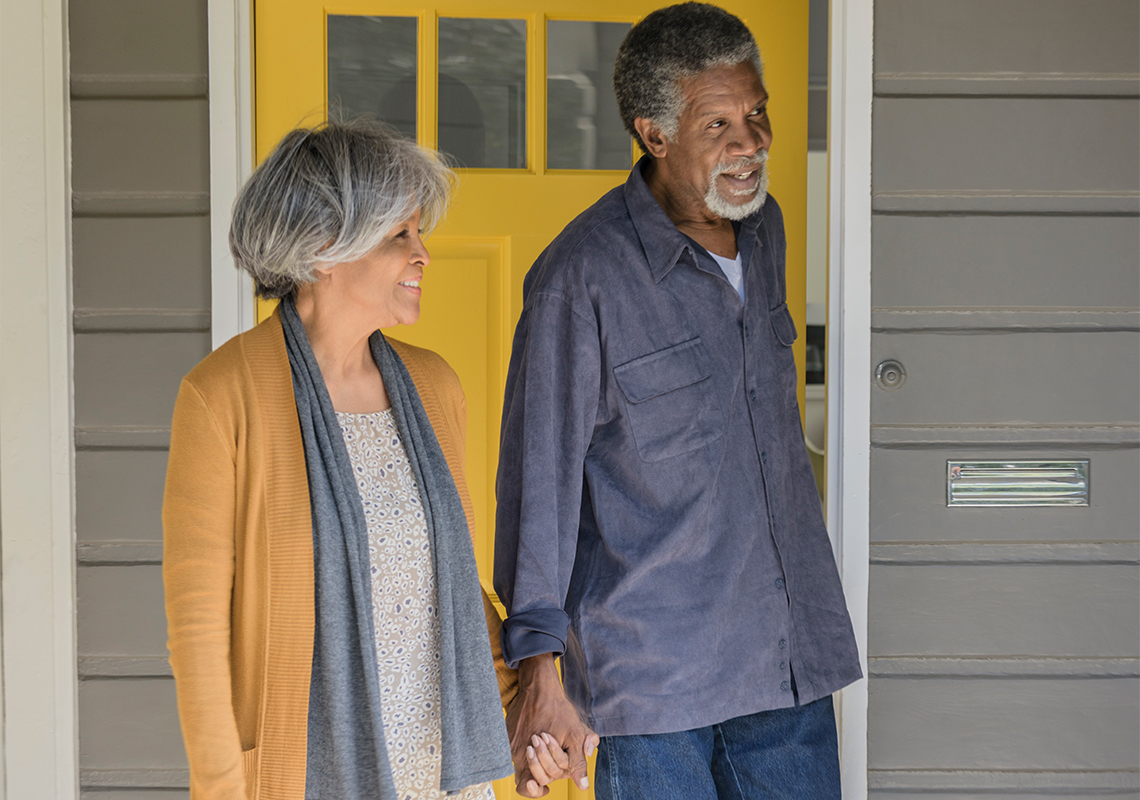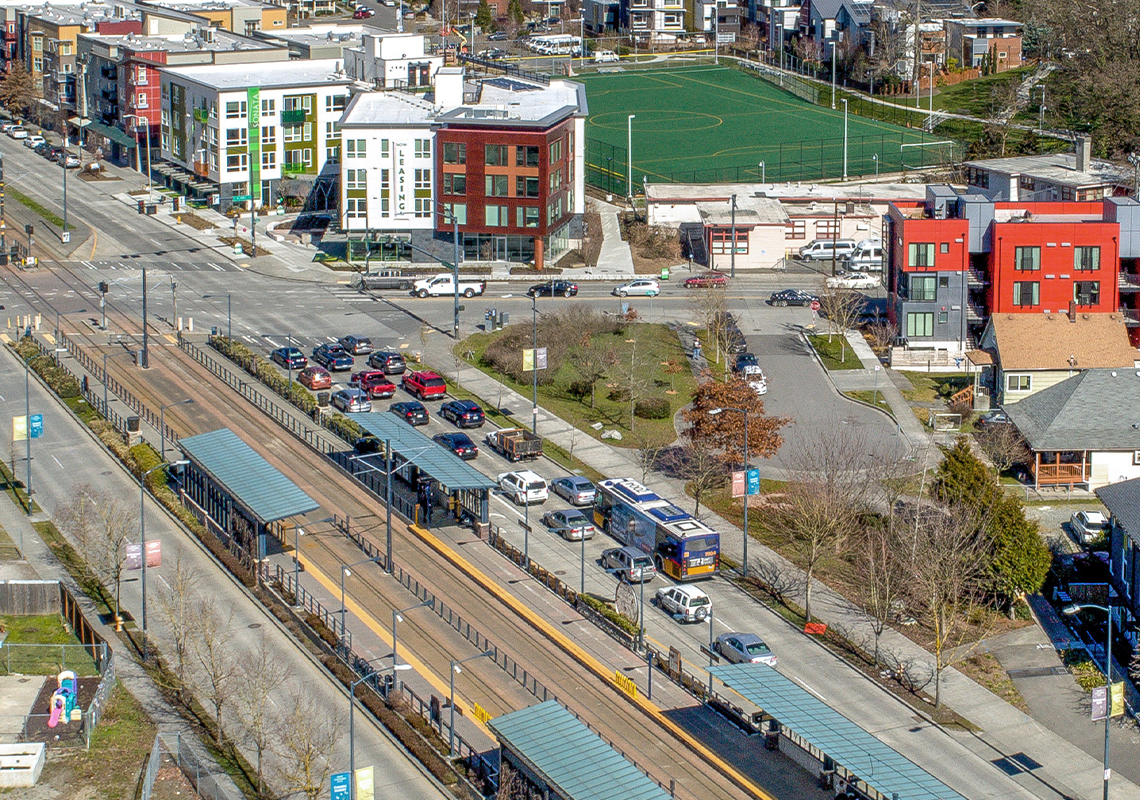By MBAKS Content Strategist James Slone
The Black Homeownership Initiative is working to close the homeownership gap.

In 2021, the Coalition for More Housing Choices joined a
network of associations and organizations to launch the
Black Homeownership Initiative with the goal of closing
the gap between Black and white homeownership rates in
Washington state.
The Coalition—representing a spectrum of nonprofit,
business, civic, and labor organizations, including MBAKS—
came together to develop a plan to build enough homes to
accommodate regional growth in a way that “benefits current
residents” and offers affordable housing choices.
The Black Homeownership Initiative was a natural outgrowth
of the Coalition’s approach to housing with its strong focus on
equity, seeking to align “infrastructure development, housing
production and preservation, and underwriting and lending” to
double the Black homeownership rate in the state.
They have their work cut out for them.
Mind the Gap
A history of exclusionary housing policies has meant that people of
color and other minorities have been denied the financial equity,
stability, and peace of mind that comes with homeownership—the
basic building block of the American dream. The Black community
has been especially impacted.
According to the Urban Institute, Black homeownership in the U.S.
has not increased since the 1960s. Indeed, it’s actually declined 5%
since 2011 versus just 1% of white households. These days, affordable
housing is scarce for everyone, but for Black households, it’s even
more elusive.
The situation is especially dire here in our own backyard. The Seattle
Times recently reported that just 34% of Black people statewide own
homes (compared to 68% of whites). In Seattle, it’s an abysmal 26%.
It is hardly surprising to learn that the median net worth of Black
households in Seattle is just $23,000, compared to $456,000 for white
households. Economic inequality means Black households are likelier
than whites to spend more than half their income on rent and debt
(e.g., student loans).
And even when they can save, their chances of being denied a home
loan are much greater. An analysis by Zillow found that Black
applicants were denied mortgages at a rate 84% higher than white
applicants in 2020.
How did it come to this?
Racism’s Self-Fulfilling Prophecy
Black and other non-white people were kept out of most Seattle
neighborhoods in the early twentieth century through zoning and
racially restrictive housing covenants. While the U.S. Supreme
Court struck down the covenants in 1948, lenders and real estate
companies continued to discriminate through “redlining,” a practice
of designating communities of color “high risk of default.”
Redlined maps determined which neighborhoods received favorable
mortgages, interest rates, and refinancing. The result? Homes in
Black communities hemorrhaged value, decent loans became hard
to come by, and predatory loans led to defaults. The stigma of
redlining also led to a loss of jobs, resources, and investment in these
communities as capital—and white residents—fled to the suburbs.
The 1968 Fair Housing Act made racial discrimination illegal, but the
resulting gap persists—Black households have less intergenerational
wealth to pass on or equity to invest in new housing. While
gentrification displaces Black residents, single-family zoning means
that more affordable types of housing cannot be built in threequarters
of Seattle neighborhoods.
(See “Codifying Prejudice” in the fall 2020 issue of Master Builder.)

Mending the Gap
There are signs that things are changing. Perhaps the most
prominent recent example is the Africatown Community Land
Trust, which has created affordable housing and cultural spaces
in the Central District to mitigate the effects of gentrification and
underinvestment in the historic Black community. Another recent
initiative spearheaded by the Seattle Foundation’s Civic Commons seeks to help 1,500 Black households become homeowners across the
Puget Sound over the next five years.
MBAKS supports the Black Homeownership Initiative because
closing the gap is a crucial part of solving the housing crisis in the
Puget Sound region—which will need to accommodate 60,000 new
residents a year—and because it’s the right thing to do.
The Housing Development Consortium (HDC), which
encompasses all major nonprofit housing developers in King
County, is a leading partner of the Initiative as part of its mission
to “ensure that all people live with dignity in safe, healthy, and
affordable homes within communities of opportunity.”
Patience Malaba, executive director of HDC, laid out the stakes last
June. “We have decades of racial injustice and economic inequality
that has consistently, persistently led to disparities in wealth,
specifically for BIPOC [Black, Indigenous, and People of Color]
communities and disproportionately for Black households. One of the
foundational steps in America to build wealth is homeownership.”
MBAKS’ Senior Policy Analyst, Allison Butcher, agrees. “The
association recognizes the need to address race-based housing policies
of the past to create a more inclusive future for our region. Part of the
solution is creating more attainable housing choices for more people
close to jobs, transit, schools, healthcare, and other amenities.”
The Initiative’s plan includes seven interrelated strategies to bolster
Black ownership. These include marketing and outreach, pre- and
post-purchase counseling, purchase supports and tools, changes in
policies and practices, support for existing Black homeowners, and
housing production to increase affordable homes.
MBAKS’ role, says Butcher, is “advocacy to enable more infill and
more affordable ‘missing middle’ housing.” MBAKS sees increasing
housing supply of all types as a key strategy to lowering home prices
and barrier of entry for Black households.

Only the Beginning
The Initiative is off to a great start, but there’s still much to be done.
Currently most of the focus is on increasing the supply of and access
to affordable homeownership. Looking toward the future, Initiative
partners and the HDC hope to develop a policy framework that can
be used to monitor and evaluate their collective efforts to increase
homeownership opportunities.
Meanwhile, a Washington State Department of Commerceled
Homeownership Disparities Work Group has developed
recommendations for reducing the gap for BIPOC communities that
intersects with the Initiative’s work. The report includes specific
statewide recommendations that could be actionable in late 2022 or
during the 2023 legislative session, creating additional momentum.
These are heartening developments. Solving the ownership gap means
ensuring that everyone can find a home of their own. But to be lasting,
it must go beyond up-zoning and legalizing more housing types.
It requires acknowledging the long history of racial discrimination
that has narrowed homeownership options for Black people and
actively working to overcome its grim legacies. Acknowledging that
the gap exists—and why it exists—is an important step.